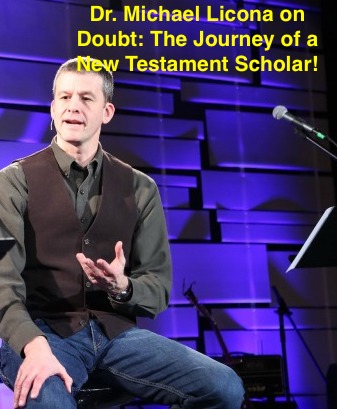I remember the first time and first day and first hour of my teaching career. I was a nervous wreck. I was so nervous I was shaking that I held on to the podium that day for dear life . . .but it started to shake too! It took some time, and now, 15 years after that event, teaching thousands of people in different demographics and walks of life around the world, I have learned the following top three skills that are unforgettable and necessary for any public speaker.
Life is not about you. And your presentation is not about you either, well unless you are Trump, or Tom Cruz! When you go to a presentation you are even at a subliminal level asking your self, “Ok what can I get out of this.” Other people are similar to you in this regard. So engage them from what they can get out of it.
To speak well you must do the following:
- Prepare, prepare and prepare again.
- Understand the supremacy of your personal story telling
- Discover the power of your body language
Lets break these down.

-
1 Prepare.
- The more you sweat in practice the less you bleed in battle
- Seinfeld and other comedians give their shows over and over again to small audiences before they get on TV
- Formulate the content: Have correct facts–research them. Content is King.
- Logic – take a logic class if you have not, read about it, or listen to audio books on critical thinking.
- Speech classes – take a speech class, come to lectures or even better give them! Consider toastmasters in your area.
- Have just a few, (3) main points –humans think better in threes.
- Give the speech to yourself, go over it – and then if possible give it to a friend or spouse to look over and listen to.
- Remember your presentation is not just the words on a page, but also, how you deliver it!
- If you can, record yourself, I do it on my iPhone on my Voice Memo app. Review and improve and repeat.
- Don’t over use media –Death by PowerPoint is a terrible way to die! See this hesterically funny video on it.
- I learned a great deal from Ken Davis’s SCORRE method. As you prepare, here are some tips.
- List topics- Brain Storm
- Why? Ask yourself “why do I want to say those things?”
- Don’t talk about what you want to talk about…but what they want to hear!…or what they need to hear?
- It leads to the objective…the main reason for your talk. What is your objective?
- Eliminate anything that does not lead to the objective. Hammer away what is not the sculpture.
- Use illustrations.
- Organize what is left so that it leads to the objective.
- Ferment –Let it age, let it sit. Go over it and refine it. –give it time. Come back to it again and again.
- Why? Ask yourself “why do I want to say those things?”
- The more you sweat in practice the less you bleed in battle
-
2 Tell Stories
- There are several psychological reasons why stories are so powerful, Pamela Rutledge, the Director of the Media Psychology Research Center tells us that:
- Stories have always been a primal form of communication. They are timeless links to ancient traditions, legends, archetypes, myths, and symbols. They connect us to a larger world and universal truths Stories are about collaboration and connection. They transcend generations, they engage us through emotions, and they connect us to others. Through stories we share passions, sadness, hardships and joys. We share meaning and purpose. Stories are the common ground that allows people to communicate, overcoming our defenses and our differences. Stories allow us to understand ourselves better and to find our commonality with others
- Stories are how we think. They are how we make meaning of life.
- Tell stories of real people: Abraham Lincoln, Obamma, Buddah make people sit up and listen.
- Tell stories of imaginary people : Bilbo Baggins, Rock Ballba–remind people how odds can be overcome.
- Use them strategically— if you see your audience dozing off—watch their body language –tell them a story that is linked to your content.
- There are several psychological reasons why stories are so powerful, Pamela Rutledge, the Director of the Media Psychology Research Center tells us that:
-
3 Master your body language and voice
- Speak with passion! Your energy will be contagious
- Speak with authority.
- Don’t over do it. If everything you say is intense then nothing you say will be.
- Use silence to your advantage …..it gets their attention back!
- Use water when you forget your lines–keep a bottle next to you.
- “ahh, ummm, you know! Like, like….” Destroy your pause-breakers—they are very annoying.
- Body Language
- Many experts tell us that 90% or more of what we communicate is NOT non-verbal
- You can save so much time and energy if you just watch the body language of guests or others. Are they interested, are they bored are they not listening. TEDS talks are a wonderful way to see how this is done well.
- Watch in a mirror as you prepare:
- Your Facial expressions
- Your Tone of voice/pitch
- Your Posture
- Your Hand gestures
- Deliver with Power and Clarity!
- The most important part of learning to speak in public is to just do it!! “You may ask “But how can I get more confident in public speaking—how can I over come the paralysis that overcomes me when I try it?” And I answer the same way you learn how to swim, get in the water.
- You can learn only so much about swimming or reading about it, you need to get wet! The more you do it the more it will become easier for you. It’s a law of nature.
- Dale Carnegie gives the example of horses that are afraid of cars. Many horses, and those of you who drive cross country have seen this, feed or graze near the highway or near rail road tracks and never even pause to look up at the thundering cars! Why is that? Because their master has constantly put them there to get used to the loud machines that roar by. So how do you train a horse that is afraid of cars? Do you lock her in a back-woods lot where she would never see steam-engines or automobiles or do you drive or pasture her where she would frequently see the machines? So to learn it, do it.
- In Conclusion, CS Lewis said..
-
“Even in literature and art, no man who bothers about originality will ever be original: whereas if you simply try to tell the truth (without caring twopence how often it has been told before) you will, nine times out of ten, become original without ever having noticed it.” ― C.S. Lewis,
-





